
Bread & Salt's Josh Lewin and Katrina Jazayeri are opening their first restaurant in Somerville later this year.
Ever since Josh Lewin left Beacon Hill Bistro just over a year ago, he's made no secret of the fact that he wants to open his own place in the not-so-distant future: "The goal is restaurant ownership," he said then. At the time, he and Katrina Jazayeri were already throwing pop-ups and events under their Bread & Salt Hospitality moniker, and this past year has allowed them to grow the business substantially, including a seven-month stint running the culinary program at Wink & Nod in the South End. (The bar has been functioning as a pop-up incubator, first giving the Whisk team a temporary home, then Bread & Salt, and now Akinto.) Lewin also found time to travel the country a bit completing a number of stages at restaurants like Atelier Crenn in San Francisco and Rasika in DC.
Now, Lewin and Jazayeri are moving forward with their first restaurant: Juliet. (It's Jazayeri's middle name, and it "sounds great for a cafe," Lewin says. Juliet will be a cafe in the European sense, not the American "coffee shop" sense; more on that later.) It will be located in the former Sherman Cafe space (257 Washington St.) in Somerville's increasingly bustling Union Square neighborhood. Sherman Cafe closed in September 2014, preceded by its sibling market around the corner of the same building; that market space is now home to Gracie's Ice Cream.
A Changing Square
Union Square has always been particularly interesting to the duo, and they've lived in the area for the past few years. (Lewin used to be based in Dorchester and thought he'd never cross the river, but he "accidentally" ended up in Somerville when the house in which he was renting an apartment was sold. A convenient move to Cambridge came up with a friend — but it turned out it wasn't actually Cambridge. When the mail came on the first day, Lewin was surprised to find out he was actually living in Somerville.)
A year ago, Lewin spoke about how much he would have loved to buy Union Square's Mid-Nite Convenient when it was briefly up for sale because he's interested in building concepts around the existing history of a space:
"We want to leave our mark, but we would love to be able to unlock a door into an existing history and merge our concept with that and just happily integrate with the community, giving them something familiar but showing improvement. I think it's a really fun concept, acknowledging the history of what you're part of ... We do have some concepts in mind that would be ground-up stuff, but we're more interested in sharing a history with something and celebrating a community on the rise."
Now that Lewin and Jazayeri have signed the lease on the Sherman Cafe space, they're reiterating the importance of the neighborhood, its history, and its growth.
"We've been looking at this space for almost a year," Lewin tells Eater. "We were very clear that we were holding out for Union Square unless the perfect situation came up somewhere else. This place is going to change. We've been going to these planning meetings for Union Square, and I'm telling you this place is going to be totally different, but we want to be a part of that. We were customers at the old cafe for a long time and got wind from the folks at Gracie's, who knew us, so this really naturally happened instead of this business going on the market. It's a nice neighborhood way of coming into an opportunity."
Multiple Dining Experiences
Juliet will offer several different types of dining experiences to meet a variety of needs, from grab-and-go commuter snacks to set breakfasts to full-service dining by an open kitchen.
"As it was a cafe, and it's at the bus stop, we know that a big percentage of the people who come in are going to be interested in a cup of coffee, something they can get in under two minutes and catch the bus, so we're going to make sure to accommodate them with a lot of fun options," says Jazayeri. "Menu items that are designed to be really fast to execute and also portable to make sense to eat on the road or a half-hour after you've bought it."
There will also be counter service available for the people who want to "come in, have a cup of tea, maybe a sandwich, soup, or salad, sit, read their book, hang out for a while," Jazayeri continues. Diners will order at the counter, and the team will bring out the food and clear plates.
Some of the seating, most likely a smaller portion than the seat-yourself area, will be devoted to full-service dining, from breakfast on, with a view into the open kitchen.
The team is still finalizing their dinner-service model and overall hours.
A Cafe, Not a Coffee Shop
We're focused on meals and conversations.
Even though Jazayeri mentions diners sitting and reading, it's not the the team's intention that this will be a coffee shop where people sit with laptops and do work. "We want it to be a restaurant — a casual restaurant, but a restaurant," she says. "We've got great coffee shops in the area, and we're not equipped to be that, nor do we want to be that. We're focused on meals and conversations. Take a break from your work, come and hang out, read your book, start your day with us, have lunch with us, relax after you get off the bus."
"We don’t want to compete with some of the other places in the Square that are doing that," Lewin adds. "We want to add something that’s not already here. When you think about a cafe in the American sense of the word, or at least the Boston sense of the word, it means 'coffee shop,' and it means somewhere to work. What we’re more inspired by is the European-style cafe where it’s a place away from your home, and it is very much a restaurant. It doesn’t mean it’s where you go for your special occasion or your weekend, but it’s an all-day, everyday restaurant and a place where you can have some fun. Not just a coffee shop."
"It's a meeting place," Katrina says, "and there's no requirement to have a meal with us by any means. We'll have great drink options. You're hungry? Great. You're meeting a friend for coffee? Great."
Breakfast Is Not an After-Thought
It's early to get too specific about the menu, but the duo is particularly excited about the idea of a set breakfast. "We've been thinking about this for a long time, ever since going to our favorite place in Brooklyn, Okonomi," says Jazayeri, "and we also noticed on our trip to Europe that during every meal there was sort of this set. A meal involves more than one item — it's your coffee, your juice, your bread item..."
"There are limited choices, and it just works," Lewin says. "We've thought about it for you, trust me. Plus, it only costs a few bucks, and you sit down and order that. We're not saying that we would do a Japanese-style breakfast, but at Okonomi, you spend $15 and you're in one of the hippest places in Brooklyn, and a plate comes out to you with some pickles, some vegetables, a Japanese omelette, a rice bowl with a poached egg on it, and you can add some salmon roe. You eat it and feel great because someone's really, really thought it through. So for our full-service dining, we want that experience to start with breakfast and move all the way through the day. Breakfast isn't an after-thought. Breakfast is actually one of the phases of the day that we're most excited about."
From Scratch
Diners can expect lots of items made in-house, entirely from scratch, from tea to cheese to yogurt. "The farmer relationships that we’ve built over my time at Beacon Hill Bistro and Katrina’s time at Cuisine en Locale are going to be just as important to us here as in the past, and that means doing a lot of it ourselves," says Lewin. "Also, we want to really be a place where people can learn in the kitchen as well as in service. In the kitchen, if someone is with us for a year, two years, they should be ready to either be a manager with us at that point or move on and really impress somebody somewhere else, and that means having a large skill set and understanding process, and that means making a lot of things from scratch and doing it the right way, so we’ll be doing a lot of that."
Some of the tea will be made in-house based on what the team has learned from a local company called Boston Teawrights. Additionally, there'll be tea from Mem Tea in Watertown. "We won't have an exclusively handmade tea program because that’s going to be restricting for certain people and we’re not experts yet," says Jazayeri. "It’s a learning process for everyone, which is important to us, and we think the product can be interesting and dynamic, but we’ll also have the classics that you expect."
"We talked a lot about what a coffee and tea program looks like, because it’s a little bit new territory for us," says Lewin. "Coming from a full-service restaurant, coffee and tea is important, but it’s usually hidden. At an all-day serving cafe, especially with an open kitchen, it’s not so hidden. But we’re not trying to compete with the coolest coffee shops around; we don’t know that much. It’s not going to be the most expensive coffee in town. We’re not going to have the largest menu of house-dreamt-up espresso drinks and stuff like that, but we’ll have your classics, we’ll train our staff to make them very well, and we think we will have a couple specialty options too."
Putting on a Show in an Open Kitchen
 The design process is in the works; to the right, see a working draft of the restaurant's logo, created by Jazayeri. Since Lewin and Jazayeri are so interested in integrating with the existing history of spaces, their renovations won't be too heavy. "We've got such great light in that space," says Jazayeri. "Our goal is not to make it unrecognizable; we don't want it to feel like a brand new space. We want it to feel like a freshened, exciting, 'us' space, but if you loved Sherman, we want you to feel like this is the same space. And we loved Sherman."
The design process is in the works; to the right, see a working draft of the restaurant's logo, created by Jazayeri. Since Lewin and Jazayeri are so interested in integrating with the existing history of spaces, their renovations won't be too heavy. "We've got such great light in that space," says Jazayeri. "Our goal is not to make it unrecognizable; we don't want it to feel like a brand new space. We want it to feel like a freshened, exciting, 'us' space, but if you loved Sherman, we want you to feel like this is the same space. And we loved Sherman."
"You'll see some of Sherman Cafe there, but it will look like ours," Lewin says. "We’re not going to redirect the roots too much — if you’ve sat and enjoyed a sandwich and a coffee at Sherman Cafe, you’ll be seated on the same level, you’ll see some of the same lines that you used to. But we’re going to build it up a little bit more. We’re going to design the dining room to be a more comfortable space."
"But the biggest change is going to be in the kitchen," he continues. "We want to open the kitchen to accomplish a few things. We want that kitchen counter seating to overlook the work going on in the kitchen so diners can interact with the people working there to allow for that full-service feeling. We also want to put on a little show. We’re really confident in our kitchen programs, and we have a great staff, and we want to see them work. And we want our staff to be comfortable at work. It’s a great space, but the kitchen that’s in there is a little bit of a box, and we want to blow that out and let people feel like they’re part of the world while they’re working. The kitchen life is hard enough. We don’t want them to feel enclosed. I’m used to working in basements, and I’m tired of it. I want to be out in the open."
They hope to have a little bit of outdoor seating as well; the sidewalk out front is fairly wide. "We think it would be great for that area of town," says Lewin. There’s this great little shop right next to us now, Loyal Supply Co. They’ve been really helpful for us; it's a nice young company, and they’re actually designers and do design work out of their office at the store, and they’ve just been great neighbors. Since they have a beautiful store, we want to build a beautiful store and invite people to sit outside in that kind of forgotten stretch of Washington Street."
A Framework for the Future
We'll explore different spaces in different manifestations as time goes on.
In offering multiple dining experiences to suit different occasions, Lewin and Jazayeri draw some inspiration from Torrisi Italian Specialties in New York, a restaurant that started out by offering a wildly popular prix fixe at night — and sandwiches during the day. The company has spawned multiple other restaurants with even more to come.
"Cooks were in there working with these great ingredients, and you could just stop in on your lunch break and get a sandwich," Lewin says. "This idea has been incubating with us for a long time, being able to be multiple things to the community with just some simple adjustments to the program."
"And that’s kind of foundational to our company goals as a whole," says Jazayeri, "in terms of the core idea that we’ll explore different spaces and different manifestations as time goes on. But it’ll be based on what makes you want to return to a place: It’s flexibility, but it’s also trust and consistency."
"People know us for doing all sorts of really specific things," says Lewin, "and they've put a lot of trust in us to come out and celebrate this holiday or that event. They know that they can get some really great versions of globally-inspired classics, and we do our research and we have things that we love. At Juliet, we want to be able to continue to celebrate some of that but in a more structured environment. Basically what we’re trying to build is a place for us to share our favorite things and to build a framework that we can train our staff in. There’s a lot of consistency but kind of an open conversation. These are the things we love; this is our neighborhood spot. And in the future, we may build some more specific restaurants or some more full-service restaurants, but this is small on purpose, it’s neighborhood on purpose, and it’s a place for us to introduce ourselves to Union Square and the greater area — as a real anchor to what we do in the future."
Seeking Neighborhood Support via Kickstarter
Lewin and Jazayeri launched a Kickstarter campaign today, hoping to earn $40,000 in the next 28 days. "We need a little bit of help. It’s a small project, and there’s a lot of investment money kind of available to us, and people are interested in us, but as this is such a personal project, we want to be careful about entering into those arrangements," says Lewin. "We have future plans, bigger projects, and we want to preserve some of those potential relationships for those larger future projects. We want to be able to keep this one personal focused and with the help of the neighborhood."
"If the neighborhood is not interested in it, and our Kickstarter is unsuccessful, that tells us something, but we don't expect that to happen," he continues. Kickstarter is a nice opportunity to reach people before opening, Lewin explains. "You're just getting a cash advance; you've sold some stuff on good faith, and we'll be looking forward to opening our doors and making good on those commitments. I think it'll be a nice, natural way to build something with such a neighborhood focus."
"We want to encourage people to be involved and be vocal and tell us what they think of what we’re doing," says Jazayeri. "We want there to be that dialogue. We’re not building our temple and hoping people are interested in it. We want to build something that works for everyone, and through the Kickstarter rewards, we get to invite people who are interested in this project in for classes and events. We have plans for the money we hope to raise on Kickstarter, but regardless of that, we also want to know who’s interested in this project and us and Union Square."
"It’s a great initial outreach tool," says Lewin, "and it allows us to ask for that help and expose ourselves to the neighborhood. We’re not going to be that spot that had all this money in the bank and just kind of plopped down in your neighborhood. We want to let you know that we’re here for you and we’ll need your help for years going forward as well as right now."
"Community is super important," Lewin continues, "and people say that a lot, and they often mean it, but what we mean by that is that we really want to observe how people interact with us at Juliet and how they enjoy it and adjust to it. It’s very important to us that we’re not just dropping a cookie-cutter concept on a neighborhood, and we talked about that a year ago; it’s not something that we just dreamt up. Our vision starts with the specific place, the front door as well as the neighborhood around it, and so that’s really important to us. We want to grow into it. It should be comfortable; it should feel like you’re part of our lives, part of our home to some degree. You’ll see the space change, you’ll see the space evolve with us and with Union Square as well as the menu and the experience that you have. We’ll open up with a great program — but a program that leaves a lot of room for the impact that the community has in reverse on us."


















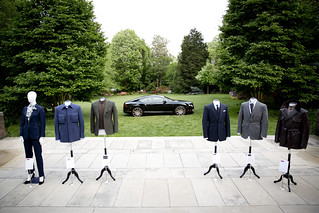
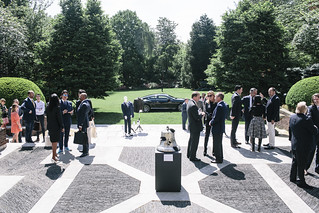


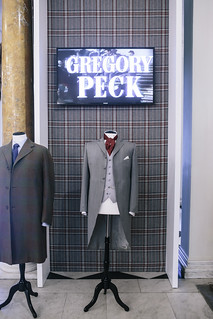
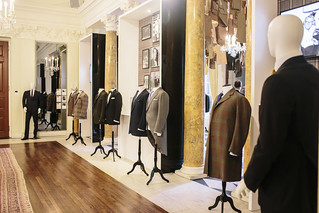
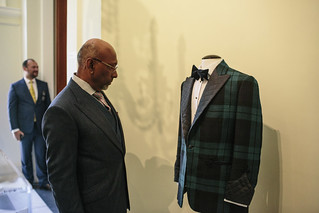
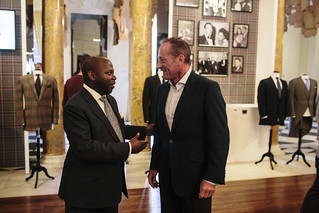


























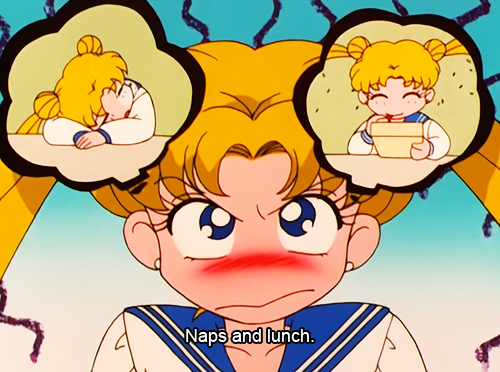
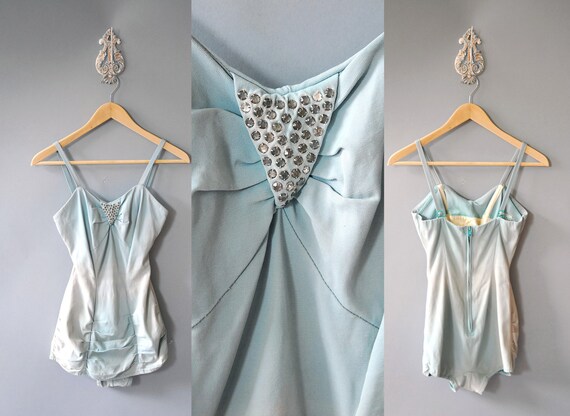















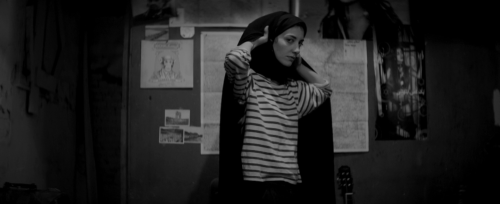






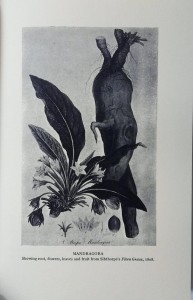

 The lights show couples — a man and a woman, two women or two men. Set up recently at 47 crossings, they were to be taken down in June, after the conclusion of several gay-friendly events.
The lights show couples — a man and a woman, two women or two men. Set up recently at 47 crossings, they were to be taken down in June, after the conclusion of several gay-friendly events.




















 The design process is in the works; to the right, see a working draft of the restaurant's logo, created by Jazayeri. Since Lewin and Jazayeri are so interested in integrating with the existing history of spaces, their renovations won't be too heavy. "We've got such great light in that space," says Jazayeri. "Our goal is not to make it unrecognizable; we don't want it to feel like a brand new space. We want it to feel like a freshened, exciting, 'us' space, but if you loved Sherman, we want you to feel like this is the same space. And we loved Sherman."
The design process is in the works; to the right, see a working draft of the restaurant's logo, created by Jazayeri. Since Lewin and Jazayeri are so interested in integrating with the existing history of spaces, their renovations won't be too heavy. "We've got such great light in that space," says Jazayeri. "Our goal is not to make it unrecognizable; we don't want it to feel like a brand new space. We want it to feel like a freshened, exciting, 'us' space, but if you loved Sherman, we want you to feel like this is the same space. And we loved Sherman."